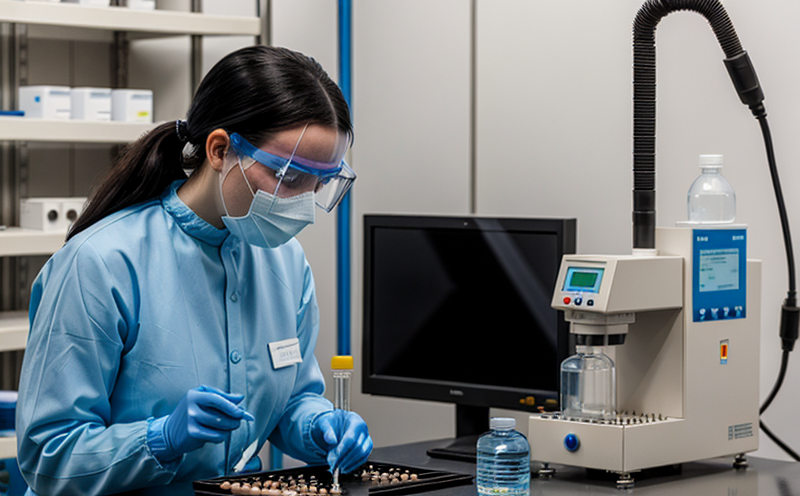Size Exclusion Chromatography Oligomer Testing
Size exclusion chromatography (SEC) is a powerful analytical technique widely used in pharmaceutical testing to separate molecules based on their size. This method plays a crucial role in the analysis of oligomers, which are short polymers composed of two or more monomeric subunits. The primary goal of SEC oligomer testing is to ensure that drug substances and formulations meet stringent regulatory standards regarding purity and quality.
The process involves the use of specialized columns packed with porous beads designed to retain molecules based on their size. As the sample passes through the column, smaller molecules are retained longer than larger ones, allowing for separation based on molecular weight. This technique is particularly important in pharmaceuticals where even trace amounts of impurities can affect drug efficacy and safety.
One of the key challenges in oligomer testing is distinguishing between desired product components and unwanted by-products or contaminants. SEC provides high-resolution separations that enable accurate quantification of these components, ensuring that only pure products reach the market. This capability is critical for maintaining the integrity and reliability of pharmaceuticals.
The technique is also instrumental in monitoring the stability of drug formulations over time. By regularly testing samples using SEC, quality managers can identify changes in molecular structure or impurity levels that could indicate instability. This proactive approach helps to prevent potential issues during clinical trials and post-market surveillance.
Another important aspect of SEC oligomer testing is its role in ensuring compliance with international standards such as ISO 17025 for laboratory accreditation, ICH Q6A for quality standards, and FDA guidelines. These regulations emphasize the need for robust analytical methods capable of detecting even minute deviations from specification.
In summary, size exclusion chromatography oligomer testing is an essential tool in pharmaceutical development and production. It provides critical insights into the purity and stability of drug substances, ensuring that they meet the highest standards of quality and safety. By leveraging this technology, companies can enhance their compliance efforts while also gaining a competitive edge in the market.
Applied Standards
Size exclusion chromatography oligomer testing adheres to several key international standards that ensure accuracy and reliability. These include:
- ISO/IEC 17025: This standard sets the requirements for technical competence of bodies operating calibration and testing laboratories.
- ICH Q6A: Guidelines on quality aspects of biotechnological/biological products, which emphasize the importance of SEC in assessing oligomer purity.
- FDA 21 CFR Part 820: Regulations governing medical devices that require stringent control over manufacturing processes, including SEC testing for drug substances.
These standards provide a framework for ensuring that all testing procedures are consistent and meet the highest quality benchmarks. Compliance with these guidelines is crucial for maintaining regulatory approval and market access.
Benefits
- Purity Assurance: Ensures that only pure products reach the market, minimizing risks associated with impurities.
- Stability Monitoring: Regular testing helps identify changes in molecular structure or impurity levels due to instability over time.
- Compliance Verification: Ensures adherence to international standards such as ISO 17025, ICH Q6A, and FDA guidelines.
- Enhanced Quality: Provides critical insights into the quality of drug substances, supporting continuous improvement in manufacturing processes.
The benefits of SEC oligomer testing extend beyond mere compliance; it contributes to safer and more effective pharmaceutical products. By ensuring that only high-quality materials are used in formulations, companies can improve patient outcomes while maintaining their reputation for reliability and integrity.
Quality and Reliability Assurance
The quality and reliability of size exclusion chromatography oligomer testing are paramount to the success of pharmaceutical manufacturing. To ensure consistent results, laboratories employ stringent quality control measures, including:
- Regular calibration of equipment using traceable standards.
- Training and certification of personnel on best practices for SEC operation.
- Documentation of all testing procedures and results to facilitate reproducibility and audit trails.
- Participation in proficiency testing programs recognized by regulatory bodies.
By adhering to these protocols, laboratories maintain a high level of accuracy and precision in their SEC oligomer tests. This commitment to quality is reflected not only in the technical capabilities but also in the reliability of the data generated from these tests.





